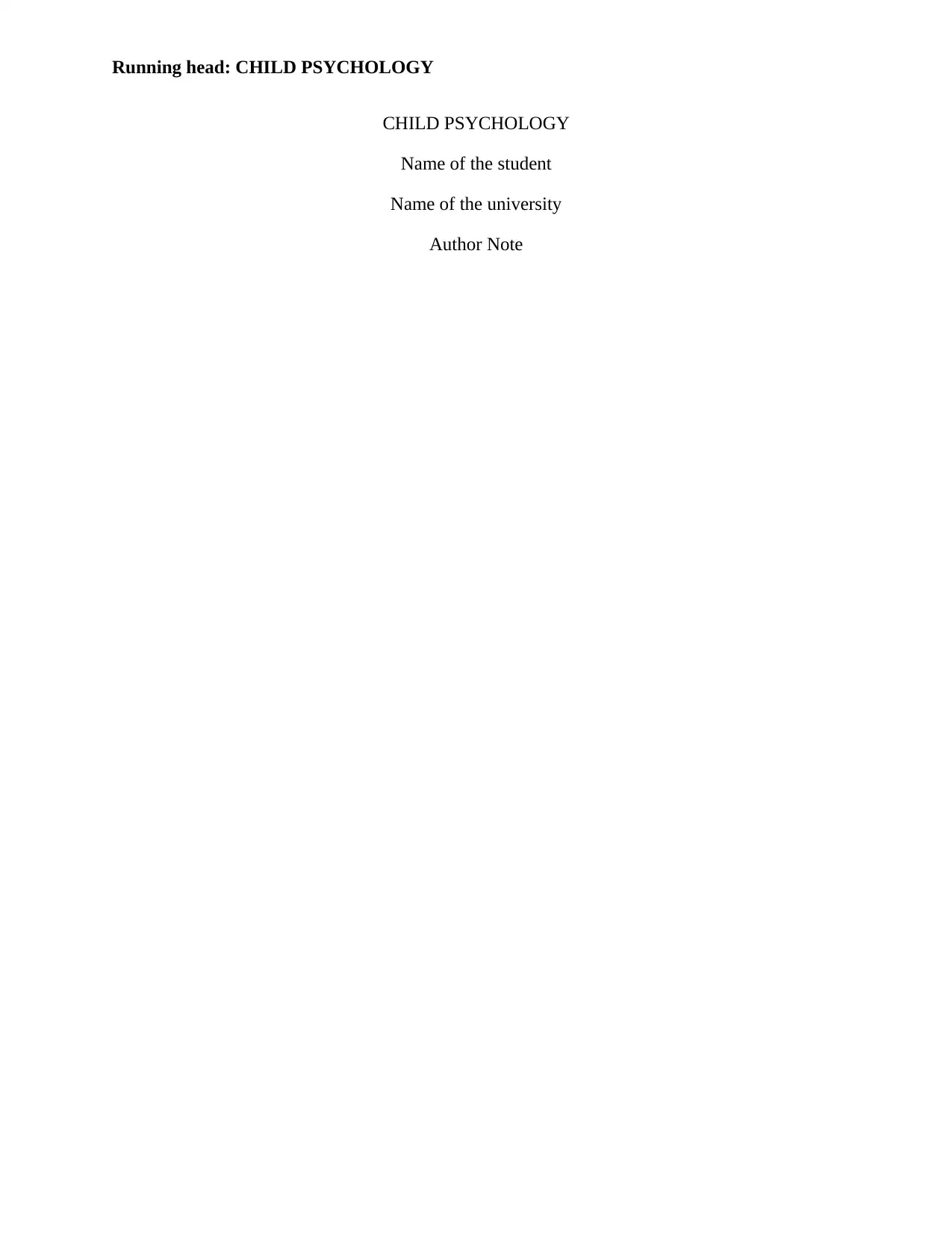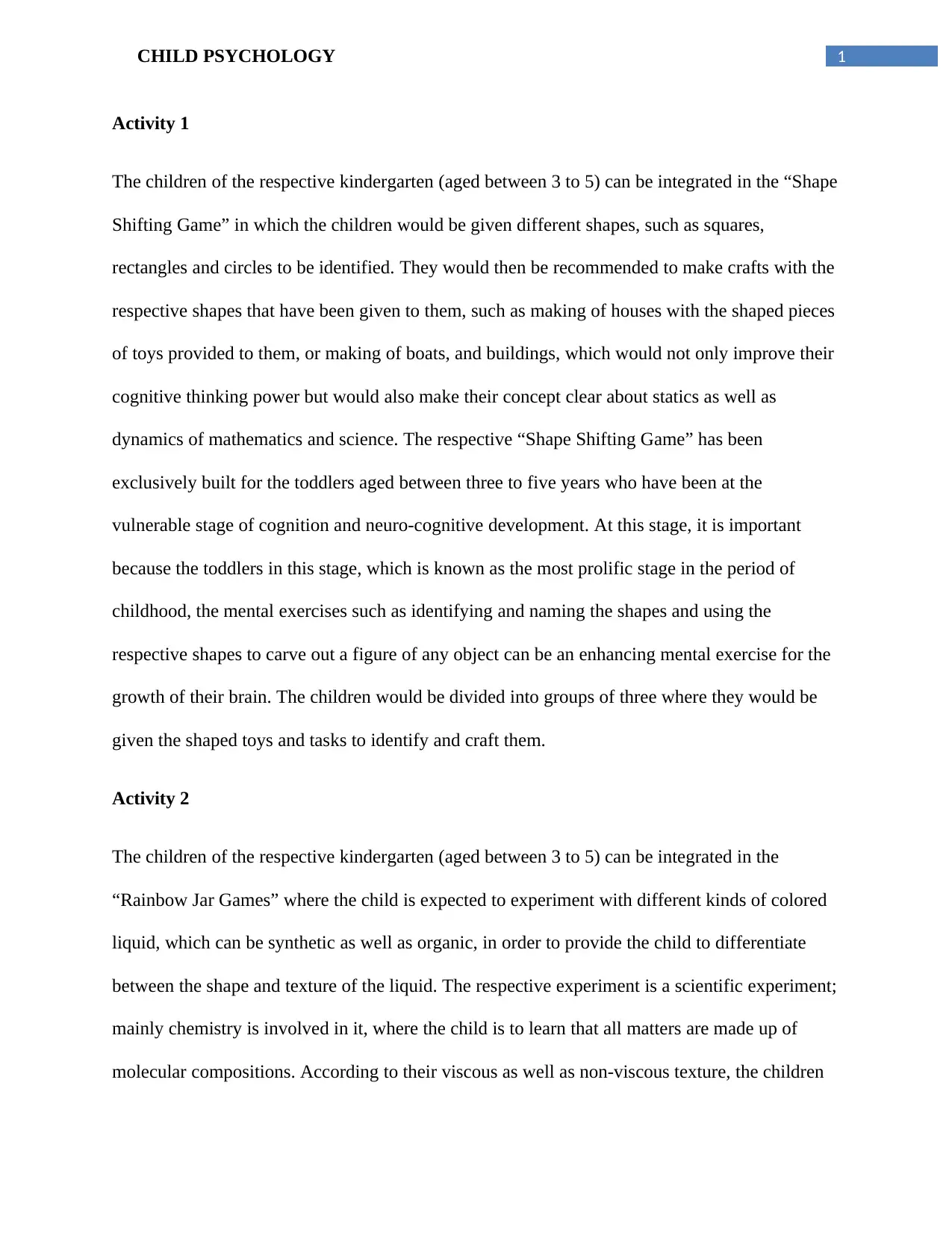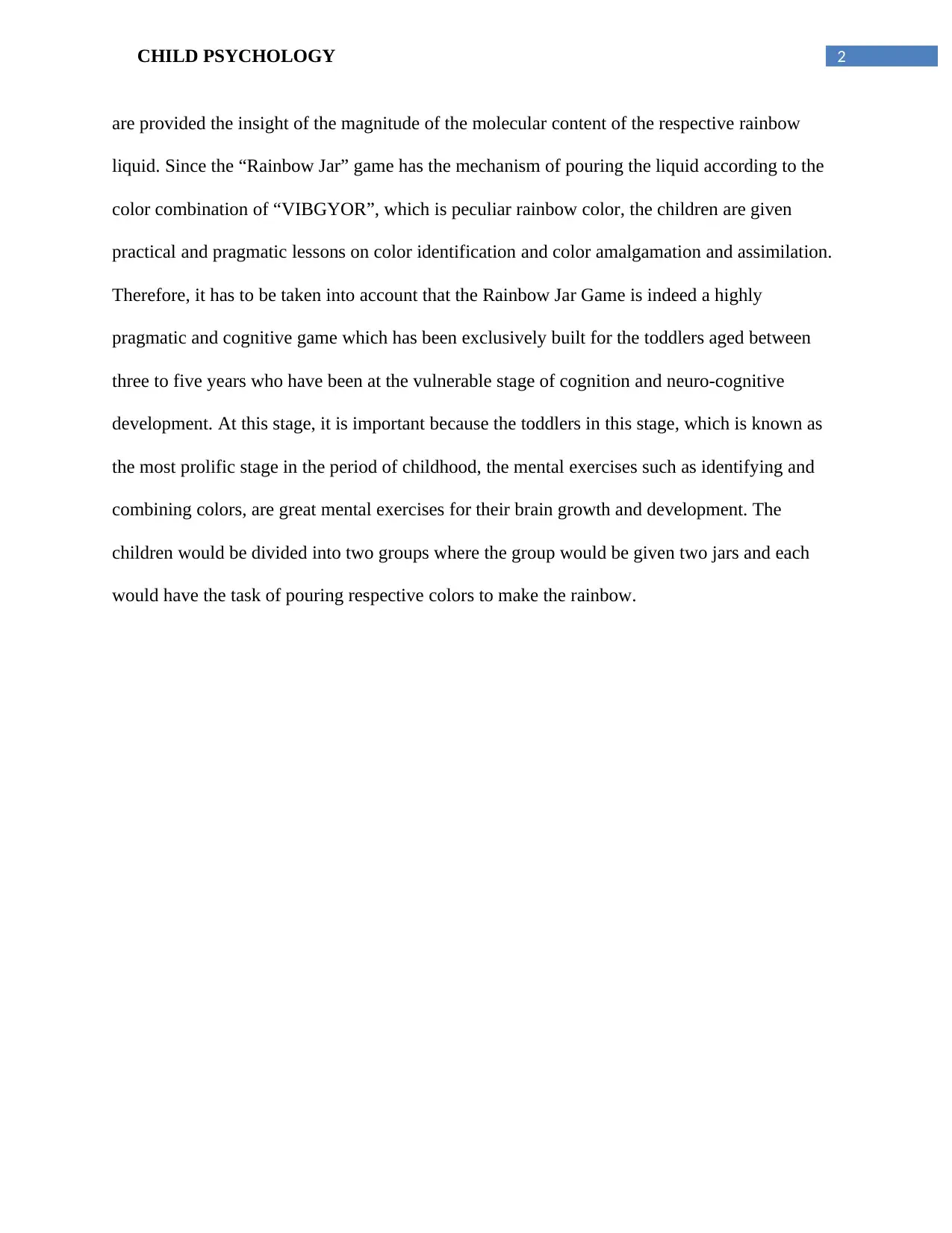Child Psychology: Kindergarten Integrated Curriculum Plan (Ages 3-5)
VerifiedAdded on 2022/12/26
|3
|558
|92
Practical Assignment
AI Summary
This assignment focuses on creating an integrated curriculum plan for children aged 3-5, addressing key areas in child psychology. The solution presents two integrated play activities: the "Shape Shifting Game" and the "Rainbow Jar Game." The Shape Shifting Game involves identifying and crafting with shapes to enhance cognitive and mathematical understanding. The Rainbow Jar Game introduces children to color identification, mixing, and basic chemistry concepts through experimenting with colored liquids. The curriculum planner emphasizes learning goals, teaching strategies, and links to the EYLF (Early Years Learning Framework), with activities designed for small group interactions. The assignment highlights the importance of early childhood mental exercises for brain development and offers practical, accessible tools and equipment for implementation.
1 out of 3




![[object Object]](/_next/static/media/star-bottom.7253800d.svg)